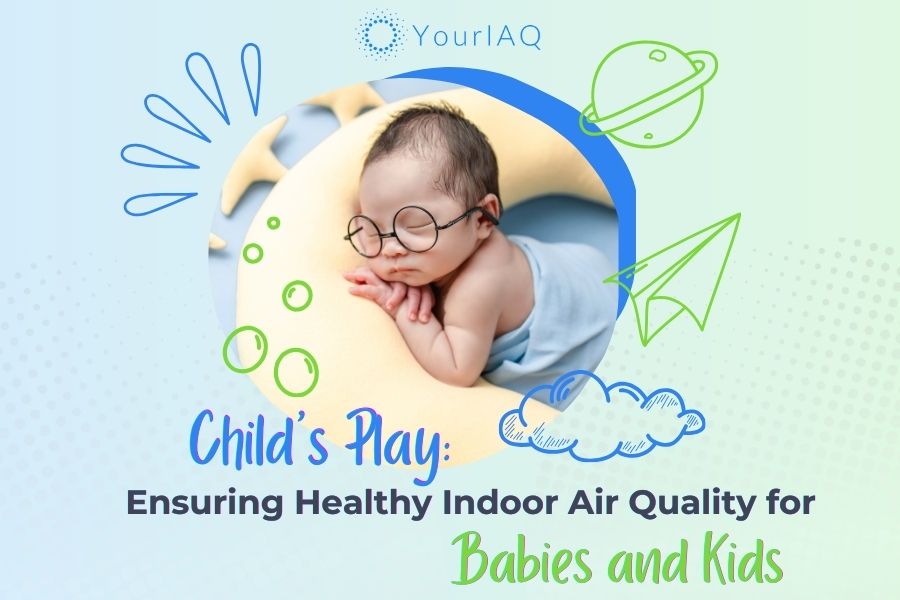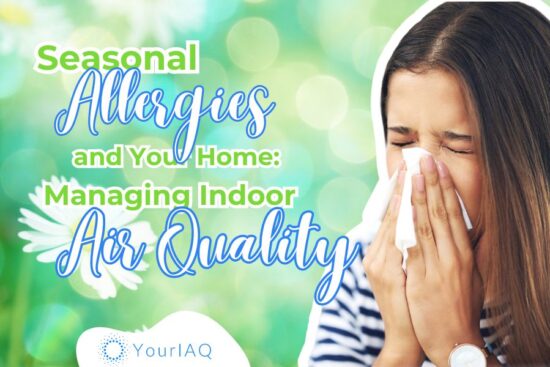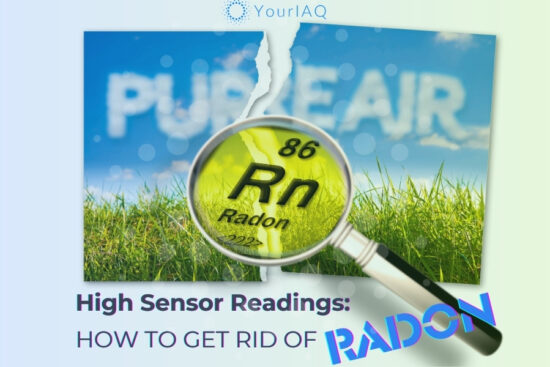
The quality of the air your baby breathes today has a powerful impact on their health, both now and in the future. Sadly, in 2019 alone, an estimated 476,000 infants died from complications linked to air pollution exposure. This danger is tragically amplified in regions (Bangladesh, India, and sub-Saharan Africa) where cooking with solid fuels is common, contributing to this staggering number of deaths.
Babies and children spend a significant amount of time indoors, making indoor air quality crucial. Unfortunately, contaminated indoor air has serious consequences, particularly for our youngest family members. Exposure to polluted air increases a child’s lifelong risk of respiratory illness, allergies, and even developmental issues.
Researchers in India found that infants in homes with higher levels of particulate matter (PM2.5) had lower visual memory scores and slower visual processing speeds in their first two years of life. These findings highlight the importance of not only protecting children from respiratory health problems caused by air pollution but also safeguarding their cognitive development.
“This is everyone’s problem,” said Kari Nadeau, director of Stanford’s Sean N. Parker Center for Allergy & Asthma Research. “Nearly half of Americans live in places with unhealthy air. Understanding and mitigating the impacts could save a lot of lives.”
Given these alarming risks, understanding what constitutes safe air and how to improve indoor air quality is crucial for parents and caregivers.
Are Babies Considered Sensitive Groups for Air Quality?
Yes! Babies and children are especially vulnerable to the effects of air pollution. Here’s why:
How Babies’ Bodies Are Developing
Their lungs, immune systems, and even gut bacteria are still developing, making them more susceptible to damage from pollutants. Research suggests that air pollution in the first 6 months of life may disrupt a baby’s gut microbiome, potentially increasing their risk of allergies, obesity, and other health issues.
Smaller Lungs, Faster Breathing
Babies have unique respiratory systems.
They breathe much faster than adults, taking in about 40 to 60 breaths per minute, even while sleeping. This increased breathing rate is necessary because an infant’s lungs and chest cavity are smaller in proportion to their body size. To get enough oxygen, babies need to breathe 2 to 3 times as often as adults.
Additionally, unlike adults whose lungs are stretched and always retain some air, a baby’s lungs might completely empty on exhalation. These factors make them more susceptible to airborne pollutants and highlight the importance of clean air for their health.
Exposure to Outdoor Air Pollution
Toddlers play actively outdoors, and babies are often taken outside for fresh air, playtime, and developmental experiences, increasing their exposure to air pollutants.
Weak Immune Defense
Tiny airways and immature defense mechanisms make babies more prone to respiratory distress from irritants and pollutants in the air. Exposure is linked to the development of childhood asthma and can increase the severity of symptoms in those who are already diagnosed.
Learn more: Practical Strategies for Clean Air for Seniors, Asthmatics, and Infants
Understanding Air Quality: Safe vs. Unsafe Levels
Navigating the complexities of air quality. It requires a nuanced understanding of what constitutes safe versus unsafe air.
This section delves into the intricacies of air quality levels, focusing on the distinct thresholds that define the air as beneficial, acceptable, or potentially harmful to babies.
What Air Quality is Safe for Babies/Toddlers/Infants?
The ideal air quality index (AQI) for babies, toddlers, and infants is 50 or below. This range is considered “good” air quality and poses minimal health risks. It means there’s a low concentration of pollutants in the air.
What Air Quality is Unsafe for Babies?
The AQI is a tool used to report daily air quality. It runs on a scale from 0 to 500 – the higher the AQI number, the more polluted the air and the greater the health risks.
Here’s what’s considered unsafe for babies, toddlers, and infants:
- AQI 51-100 (Moderate): Air quality at this level is considered acceptable. However, there may be very slight risks for babies with pre-existing respiratory sensitivities. It’s best to limit prolonged outdoor activities when the AQI is in this range.
- AQI 101-150 (Unhealthy for Sensitive Groups): Babies fall into the “sensitive groups” category. At this level, they may experience respiratory symptoms like coughing, wheezing, and difficulty breathing. Limit outdoor time, especially during peak pollution hours.
- AQI 151-200 (Unhealthy): Everyone experiences some adverse effects at this level, but babies are particularly vulnerable. Avoid outdoor activities and take steps to improve indoor air quality.
- AQI 201-300 (Very Unhealthy) & 301-500 (Hazardous): Air quality at these levels poses serious health risks to everyone, especially babies. It’s crucial to keep your little one indoors and take measures to purify the air in your home.
How to Check Your AQI:
You can find your local AQI in several ways:
- Websites: Check resources like AirNow (https://www.airnow.gov/).
- Weather apps: Many weather apps include AQI information.
- Local news: Some local news channels report on daily air quality.
Potential Indoor Air Pollutants in Children’s Rooms
A baby’s room might seem like a safe haven, but the following common pollutants can accumulate indoors, potentially harming your child’s health.
Particulate Matter (PM2.5 and PM10)
Particulate matter (PM) refers to tiny airborne particles of various substances, categorized by size:
- PM2.5: These particles are incredibly small, less than 2.5 micrometers in diameter. They can penetrate deep into the lungs and even enter the bloodstream.
- PM10: Slightly larger than PM2.5 (up to 10 micrometers), these particles mainly irritate the upper respiratory system.
Both types of PM are particularly harmful to children, exacerbating asthma, and allergies, and increasing the risk of respiratory infections.
Sources of PM in Children’s Rooms:
- Outdoor Infiltration: PM from traffic, industry, or wildfires seep indoors, especially in areas with poor ventilation.
- Combustion Sources: Cooking (especially gas stoves), fireplaces, wood stoves, and candles all release PM.
- Vacuuming: Vacuum cleaners kick up settled dust and previously deposited PM, temporarily increasing levels.
- Others: Pet dander, dust mites, and mold spores also contribute to PM levels in a child’s room.
Biological contaminants
Biological contaminants in the air come from living organisms or their byproducts. In children’s rooms, the most common culprits are:
Mold
Mold thrives in damp environments. Leaky roofs, poorly ventilated bathrooms, and any unnoticed moisture lead to mold growth. Mold spores are powerful allergens and asthma triggers for many children.
Related readings:
- How Much Mold Will Affect Your Indoor Air Quality?
- What Types of Mold Can Be Toxic in the Air?
- How to Detect Mold in the Air
Pet Dander
Tiny flakes of skin shed by furry or feathered pets contribute to indoor allergens. Dander triggers allergic reactions and worsens asthma symptoms in sensitive children.
See also: Pets and Indoor Air Quality: Keeping Air Clean for Your Furry Friends
Dust Mites
These microscopic creatures (not insects) feed on dead skin cells and are found in bedding, carpets, and soft furnishings. Dust mite droppings are a major allergen, causing respiratory issues for sensitive children.
Sources of Biological Contaminants:
- Dampness: Moisture problems are a breeding ground for mold and create a hospitable environment for dust mites.
- Pets: Even with careful cleaning, pet dander lingers in a child’s room, especially if a pet sleeps there.
- Dust Buildup: Soft toys, carpets, and less-frequently cleaned areas accumulate dust mites and other allergens.
Chemicals (VOCs)
Volatile Organic Compounds (VOCs) are a group of chemicals that easily evaporate at room temperature, releasing a gas that can be harmful, even at low levels. Children’s rooms often contain multiple sources of VOCs:
- Formaldehyde: This widely-used chemical is found in:
- Pressed-wood furniture (particleboard, plywood)
- Glues and adhesives used in carpeting and building materials.
- Some fabrics and wrinkle-free finishes on clothing
- Benzene: A common component of:
- Paints and varnishes
- Solvents and cleaning products
- Tobacco smoke
- Other VOCs: Many additional VOCs can be found in toys, scented products, air fresheners, and even some art supplies. Unfortunately, even baby-specific items like diapers and baby wipes, crib mattresses, cribs, and changing tables emit VOCs, so it’s important to choose products carefully.
Combustion byproducts
Combustion, or burning, releases numerous harmful pollutants into the air, of particular concern indoors:
Secondhand Smoke
The most significant combustion hazard in a child’s room comes from secondhand and thirdhand smoke. Even if no one smokes directly in the room, residue clings to surfaces. Babies are at elevated risk for:
- SIDS (Sudden Infant Death Syndrome)
- Respiratory infections (pneumonia, bronchitis, ear infections)
- Asthma attacks and worsened allergy symptoms.
- Long-term impacts on learning and behavior
Gas Stoves and Appliances
Even well-functioning gas stoves release nitrogen dioxide (NO2), carbon monoxide (CO), and other pollutants. A 2023 report from theguardian.com links gas stove use to increased asthma rates in children. Improperly vented gas fireplaces or heaters also pose significant risks.
These dangers sound scary, but there’s a lot you can do to protect your child.
Practical Tips for Improving Indoor Air Quality for Children
Improving indoor air quality doesn’t need to be complicated. Here are actionable steps you can take to protect your child’s health:
1. Make choices that minimize pollutants
To minimize air pollution in your home, start with source control.
- Choose mindfully: Select low-VOC or no-VOC paints, solid wood furniture, natural-fiber carpets (if possible), and toys made from safe materials. Look for certifications like GREENGUARD Gold.
- Clean naturally: Opt for cleaning products made with simple ingredients, or use baking soda and vinegar solutions.
- Ventilate well: Open windows regularly, especially after painting, using cleaning products, or while cooking.
- Cook with Care:
- Choose cleaner fuels whenever possible: electricity, natural gas, LPG, biogas, or solar stoves and ovens.
- If other fuels are necessary, opt for ultra-low emission stoves with processed solid fuels (wood pellets).
- Avoid kerosene lamps, candles, and air fresheners, which release harmful chemicals.
2. Capture pollutants from the air
HEPA air purifiers are a powerful tool for clean air. HEPA (High-Efficiency Particulate Air) filters are highly effective in capturing particles from the air, including pollutants and allergens such as dust, pollen, pet dander, and even viruses and bacteria.
To get the most out of your air purifier, follow these guidelines:
- Choose a HEPA air purifier with a CADR (Clean Air Delivery Rate) suitable for the size of the room where it will be used.
- Position the air purifier where airflow isn’t blocked, allowing it to circulate and filter the air throughout the room effectively.
- Replace the HEPA filter regularly according to the manufacturer’s instructions (typically every 3-12 months). A clogged filter significantly reduces efficiency. For added convenience, consider an air purifier with an app feature that tracks filter life and sends replacement reminders.
3. Keep moisture levels in check
Maintaining healthy humidity levels is crucial for good indoor air quality. Aim for a humidity percentage between 35-50%, using a hygrometer to monitor levels.
Be sure to investigate and fix any leaks or sources of dampness, as these create ideal conditions for mold growth. In very dry climates, a humidifier can help but remember to clean it regularly to prevent mold from developing within the unit itself.
| Did you know?
Humidifiers and dehumidifiers are both used to control humidity. Learn the difference so that you know when to use each one:
|
4. Tips for reducing air pollution exposure
To protect your baby from air pollution, take a few simple precautions.
- Avoid walking outdoors in high-traffic zones.
- If you are cooking, open the windows.
- Breastfeeding for as long as possible offers some natural protection against the health effects of pollution.
- Ensure your child stays up-to-date with their immunizations and promote a healthy diet with plenty of fruits and vegetables.
- Always ensure an air purifier is placed safely out of a baby’s reach.
FAQs: Ensuring Healthy Indoor Air Quality for Babies and Kids
This section addresses frequently asked questions parents have about keeping their child’s environment free from harmful air pollutants.
How do I know if the air quality in my baby’s room is bad?
Look out for unexplained symptoms like coughing, wheezing, or congestion. For the most accurate assessment, use an air quality monitor. We found IAQ by Sensables the most effective in reading EPA-identified indoor pollutants.
Can air purifiers help with baby allergies?
Yes, air purifiers with HEPA filters effectively remove common allergens from the air. Choose one appropriately sized for the room.
Is it safe to use essential oils in a diffuser around a baby?
Some essential oils can irritate babies. Always consult your pediatrician before using a diffuser, and ensure excellent ventilation.
Is it okay to open windows for air quality even in cold weather?
Yes, briefly open windows for ventilation even in cold weather. If temperatures are very low, air out a different room and protect your baby from drafts.
My baby has asthma. How can I improve air quality for them?
Consult your pediatrician for specific recommendations. They may suggest extra HEPA filtration, dust control measures, and possibly a referral to an allergist.
How often should I air out my child’s room to ensure good air quality?
Ventilating your child’s room daily is recommended, ideally during times when outdoor air quality is good. Mornings are often the best time for airing out spaces to reduce indoor pollutants.
What size air purifier do I need for my baby’s room?
I recommend consulting the air purifier’s specifications for room coverage. Generally, a small to medium-sized HEPA air purifier is suitable for a nursery.
Should I be concerned about air quality during pregnancy?
Briefly mention research on the link between air pollution and complications during pregnancy. Encourage expectant mothers to discuss these concerns with their doctor.
What about air purifiers with ozone generators?
Ozone generators are harmful. They produce ozone, which can irritate the lungs. Avoid air purifiers with this feature, especially for your baby.
How can I monitor indoor air quality without a specialized device?
Watch for these signs of poor air quality:
- Your child coughs, wheezes, or has congestion without being sick.
- Allergies or asthma symptoms get worse.
- You smell musty odors (which could mean mold).
- Dust builds up quickly, especially near vents.






